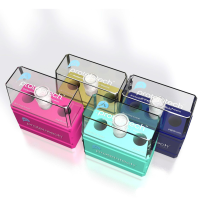The Use of Propidium Iodide to Assess Excitotoxic Neuronal Death in Primary Mixed Cortical Cultures
互联网
695
Neurodegenerative disorders are subjects of intense scrutiny in biomedical research because of their often-debilitating effects.
Currently, many laboratories are engaged in developing or testing drugs to prevent neuronal loss in a variety of these pathologies.
A key to testing such drugs is the use of a fast, reliable, and easily reproducible model of neurodegeneration and neuroprotection.
Our laboratory has previously used propidium iodide (PI) to assess the degree of neurodegeneration and neuroprotection under
a variety of conditions. Ultimately, efforts are underway in the laboratory to prevent delayed neuronal loss following acute
ischemic insults using drug therapies. It is now believed that a key mechanism of neurodegeneration following acute ischemia
or anoxia is a result of excitotoxicity via N
-methyl-D
-aspartate receptors (NMDARs) and subsequent overproduction of nitric oxide via neuronal nitric oxide synthase (nNOS). Thus,
for the purposes of this chapter, the insult used to induce cell death will be various concentrations of NMDA and the compound
used to demonstrate neuroprotection will be the nonspecific NOS inhibitor N
ω-nitro-L
-arginine methyl ester (L
-NAME). Assessment of neuronal death is accomplished by measuring changes in PI fluorescence using a fluorescent plate reader.
This chapter will outline the necessary steps required to (1) produce primary mixed cortical cultures, (2) apply PI and NMDA
to these cultures, (3) quantify the results obtained from these cultures, and (4) image these cultures in conjunction with
Hoechst 33342 and immunocytochemistry using fluorescence microscopy.









